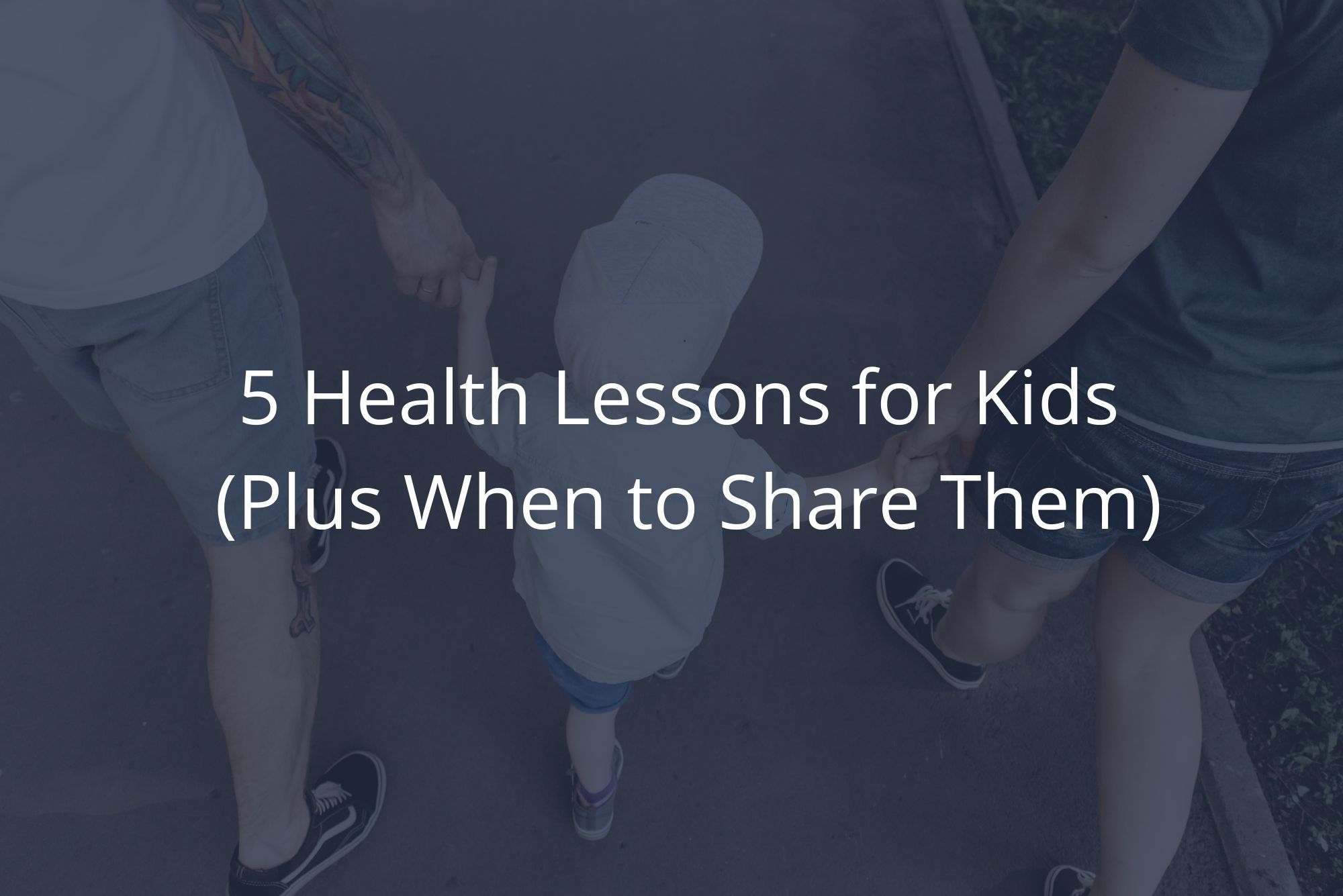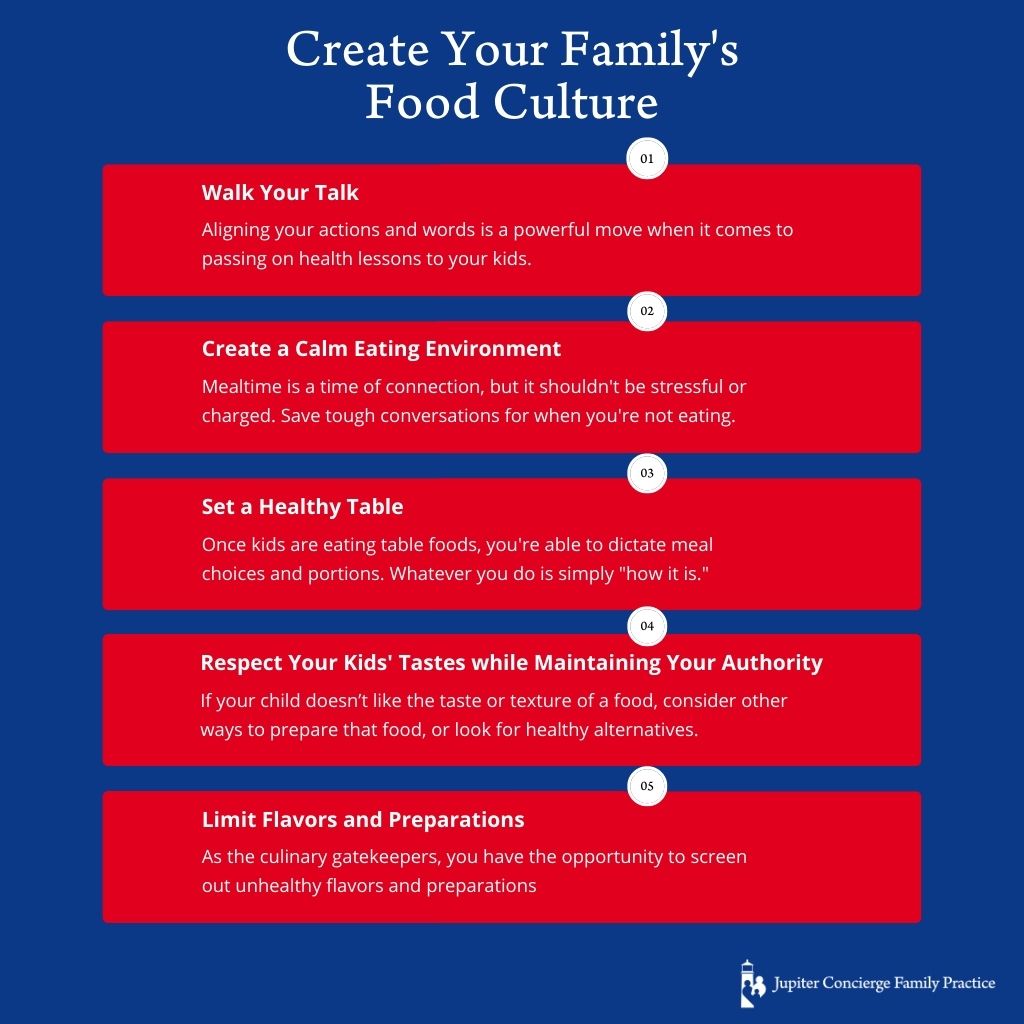
We start parenting our children from the moment they arrive in our arms. We want to teach them how to not only survive, but also how to thrive in their lives.
But as any parent knows, this is a daunting task on many levels. How do we pass down important health lessons to our kids in a way that sticks? When is the right time to talk to them about making healthy choices?
The Right Time Is Now
The “right time” to talk to kids about healthy choices is any time. These conversations aren’t rites of passage or one-off presentations. Instilling a healthy lifestyle in your kids isn’t a discrete event; it’s a long-term journey.
Peppering conversations about healthy living throughout your children’s lives from Day One gives your kids lots of exposure to these concepts. If you haven’t been doing it, don’t fret… today can be Day One.
In essence, you’ll be communicating one main message over and over to your kids: This is how we take care of our bodies.
That message can include all four parts of the 4 Pillars of Health: nutrition, sleep, exercise/activity, and stress elimination. So it becomes, This is how we eat/sleep/exercise/decompress to take care of our bodies.
And then you communicate that four-part message in two important, mutually enhancing ways: your actions and your words.
Use Actions and Words
We have a few famous sayings:
- Actions speak louder than words.
- Walk your talk.
- Monkey see, monkey do.
Essentially, they convey this thought: Children won’t always do what you say, but they’ll do what you do.
As parents seeking to raise healthy children, it’s important that you walk your talk, making certain your actions and words reinforce each other.
Children sense inconsistency — it’s one of their superpower survival skills. You’ll see more success (and less stress) if you’re ahead of them on this one. Designing a practical, doable healthy lifestyle that you can actually follow reinforces to your kids that you say what you mean and do what you say.
You say exercise is important? Something as simple as a regularly scheduled walk (that your kids know about!) demonstrates you’re serious. That kind of authenticity helps ensure your children accept and adopt the family culture you’re presenting.
The what of the healthy living message doesn’t really change over time. As you raise your children, you’re continually demonstrating and talking about healthy eating, exercising, sleeping, and stress management.
It’s the how that changes as your children grow. You continually adapt what you say to be age appropriate. Here are my best recommendations for both actions and words.
How To Share Health Lessons for Kids
Because imparting a healthy lifestyle to our children is a marathon, not a sprint, it can be helpful to think in chronological milestones.
Preconception and Pregnancy: Set the Stage
Setting the stage for healthy living can occur as early as pre-conception. Respecting the 4 Pillars of Health — nutrition, exercise, sleep, and stress management — and incorporating best practices into your daily routine will be beneficial for the baby-to-be.
For example, the mother can take high-quality prenatal vitamins even prior to conceiving. She can also get a comprehensive physical and seek the help of a nutritionist to be sure she’s getting appropriate amounts of quality nourishment.
Both parents can notice how they respond to the challenges pregnancy brings. It’s a good time to practice healthy stress management that will pave the way for a calm home environment.
Infancy and Childhood: Create the Culture
As parents, you create a family culture that your children accept as normal. Here are some of the strongest actions you can take to convey health lessons to your kids:
- Walk your talk. It bears repeating that aligning your actions and words is a powerful move when it comes to passing on health lessons to your kids.
- Create a calm eating environment. From the time your kids are breast or bottle-fed, make eating a calm time. Our bodies need rest and calm to properly digest, and modeling that for your kids from an early age will help them get the most from their food. This translates to mealtimes as a family, as well. Mealtime is a time of connection, but it shouldn’t be stressful or charged. Save tough conversations for when you’re not eating.
- Set a healthy table. Once kids are eating table foods, you’re able to dictate meal choices and portions. Whatever you do is simply “how it is.” If, for example, you never give them sweets with dinner, they won’t associate dinner and sweets. They won’t even think of it as an option… because it isn’t. You’re in charge of what appears on the dinner plate, and that’s as it should be.
- Respect your kids’ tastes while maintaining your authority. Kids also have a choice that’s worth respecting. People have vastly different tastes, some of which even come down to genetics. It’s remarkably easier to pass on good eating habits to kids if what’s good for them is something they actually like. So if your child doesn’t like the taste or texture of a food, don’t feel like you’re out of options. Consider other ways to prepare that food, or look for healthy alternatives. Positive reinforcement and giving them some power of choice can go a long way.
- Limit flavors and preparations. Because you’re the culinary gatekeepers, you have the opportunity to screen out unhealthy flavors and preparations. I suggest you avoid introducing much sugar and salt for as long as possible. When you do introduce them, don’t promote them as the leaders of the meal. Sweet and salty are easy to get used to, and it can seem like something is missing when they’re not in a meal.
Similarly, preparation is important to consider. Preparation impacts both taste and nutritional value. I suggest avoiding fried, charred, salted, and sugared foods. Favor instead boiled, broiled, and steamed foods.

Use Your Words
As everyone with kids knows, there’s a way of talking to your kids that will 100% guarantee they won’t listen. There’s not really one way of talking to them that will 100% guarantee they will listen, but certain best practices can increase your chances.
Besides using age-appropriate language and positive reinforcement, I also recommend looking for opportune moments and convenient segues that lead naturally into discussions about health.
For example, maybe your child comes in complaining that their tummy hurts. If you know they ate five popsicles earlier, you can use that opportunity to (kindly) correlate the two experiences for them.
I’m so sorry your tummy hurts. I’m sure it’s nothing serious. I wonder if it could be those popsicles you ate a little while ago.
When they get older, new and differing opportunities will present themselves to correlate taking care of their body with gaining the function and ability to do what they want to do. You might find ways to connect health with performance, for example.
If your 15-year-old wants to be a track star, you might share an article from a runner they admire with tips on how to train and eat. Or maybe they’re theatrical and starring in the school musical. Together you can explore exercises that increase lung capacity and foods that don’t coat or disrupt vocal cord functioning.
Finding healthy examples related to things that interest your kids can be an excellent way to organically talk about the health lessons you want to convey.
Conclusion
As parents, our job is simple… not easy by any stretch, but simple in fundamentals. When it comes to conveying health lessons to our kids, helping them connect how they feel to the 4 Pillars of Health gives them a useful framework for a vibrant life. Setting the example yourself will be the most effective, and it will help both of you at the same time.

Dr. David Rosenberg
Dr. Rosenberg is a board-certified Family Physician. He received his medical degree from the University of Miami in 1988 and completed his residency in Family Medicine at The Washington Hospital in Washington, Pennsylvania in 1991. After practicing Emergency Medicine at Palm Beach Gardens Medical Center for two years, he started private practice in Jupiter, in 1993. He is an avid baseball fan and Beatles fanatic, since he was 8 years old. He has been married to his wife, Mary, since 1985 and has three grown children.
David completed additional studies at Mercer University, Macon, Georgia and obtained a BS in Chemistry in 1983.
“My interests include tennis, snow skiing, Pilates and self-development.”
